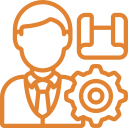By: Michael Lee Stallard
Stress is increasing today as the world economy becomes more competitive and the explosion of information overwhelms individuals. The effects are felt not just mentally, but throughout our nervous systems.
Human connection in the form of conversation and relational support provides psychological resources to cope with stress. Unfortunately, people have fewer confidants today as single-person households in America are at an all-time high of 28 percent, families have spread out, workplaces are lonelier, and both work hours and commutes are longer. Add to that the allure of media and smartphones, and you have a recipe for less time spent in meaningful face-to-face conversation, a state that contributes to greater anxiety, depression and addiction.
Hardwired to Connect
We are hardwired to connect. When our lives crowd out time connecting with others we dysfunction. As the neuroscientist Matthew Lieberman said in his TED Talk, connection is a superpower that makes people more productive, healthier and happier. To reverse these ominous trends we need to dial back our achieve-aholic tendencies to obsessively pursue wealth, power, and fame, and in place of it spend more time and energy connecting with others in supportive relationships.
Interestingly, Millennials are trying to do just that in response to seeing their Boomer parents’ struggles. When global marketing firm McCann Worldgroup surveyed 1,000 individuals in the U.S. between the ages of 16-30 years old in 2011, it found more than 90 percent of those surveyed rated “connection and community” as their greatest need. As the researchers put it, “to truly grasp the power of connection for this generation, we can look at how they wish to be remembered. It is not for their beauty, their power, or their influence, but simply for the quality of their human relationships and their ability to look after those around them.” Although Millennials long to connect, they are becoming increasingly frustrated in meeting that desire, in part because of addictions to smartphones and other media.
Connection in the Workplace
Employers can make a difference by recognizing that people are coming to work with a connection deficit. Organizations that have relationally toxic or indifferent cultures exacerbate the situation. In many workplaces, anyone who takes lunch away from his desk is labeled as a slacker. Companies that are hell-bent on growth at any cost are harming their employees and their own organization’s performance.
Wise leaders not only value task excellence, they value relationship excellence. Both are necessary for an organization to thrive. Employees who experience sufficient connection, 1) perform better cognitively and physically, 2) give greater discretionary effort, 3) are more aligned with organizational goals, 4) communicate more so that decision-makers have better information and that improves the quality of decision-making, and 5) engage in creative conversations that fuel innovation. These five benefits add up to a powerful competitive advantage that comes from having a culture of connection in the workplace.
Leaders can create cultures of connection by communicating an inspiring vision that unites, valuing people as human beings rather than means to an end, and giving people a voice in decisions that affect them. In my latest book, Connection Culture; The Competitive Advantage of Shared Identity, Empathy and Understanding at Work, I recommend leaders focus on shaping the culture–the attitudes, uses of language, and behaviors of the people–to be one that promotes and enhances healthy and collaborative relationships.
Today, more than two-thirds of workers in America report they do not feel connected at work. Changing workplace cultures in ways that boost connection will not only improve America’s productivity, it will also provide psychological resources to cope with the rising stress of modern life thereby improving the employee’s health, happiness and longevity.
This article was written originally posted here. It was reprinted with permission from the author.
Michael Lee Stallard and HRDQ-U are hosting a three-day creativity and innovation training webinars series April 19th, 20th, 21st at 12pm ET.Save your seat here!
Michael Lee Stallard is president of E Pluribus Partners, and a speaker, teacher, and consultant on leadership, employee engagement, productivity, and innovation. He is the primary author of Fired Up or Burned Out: How to Reignite Your Team’s Passion, Creativity and Productivity. Articles written by Michael or about his work have appeared in leadership periodicals worldwide. He has spoken or taught at many leading organizations, including General Electric, Google, Johnson & Johnson, the M.D. Anderson Cancer Center, the NASA Johnson Space Center, Scotiabank, the U.S. Treasury Department, and the Yale-New Haven Hospital.













